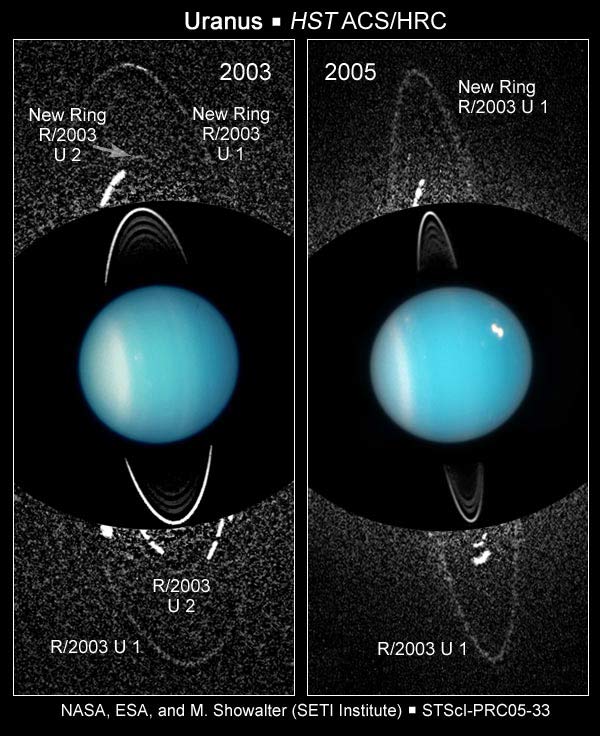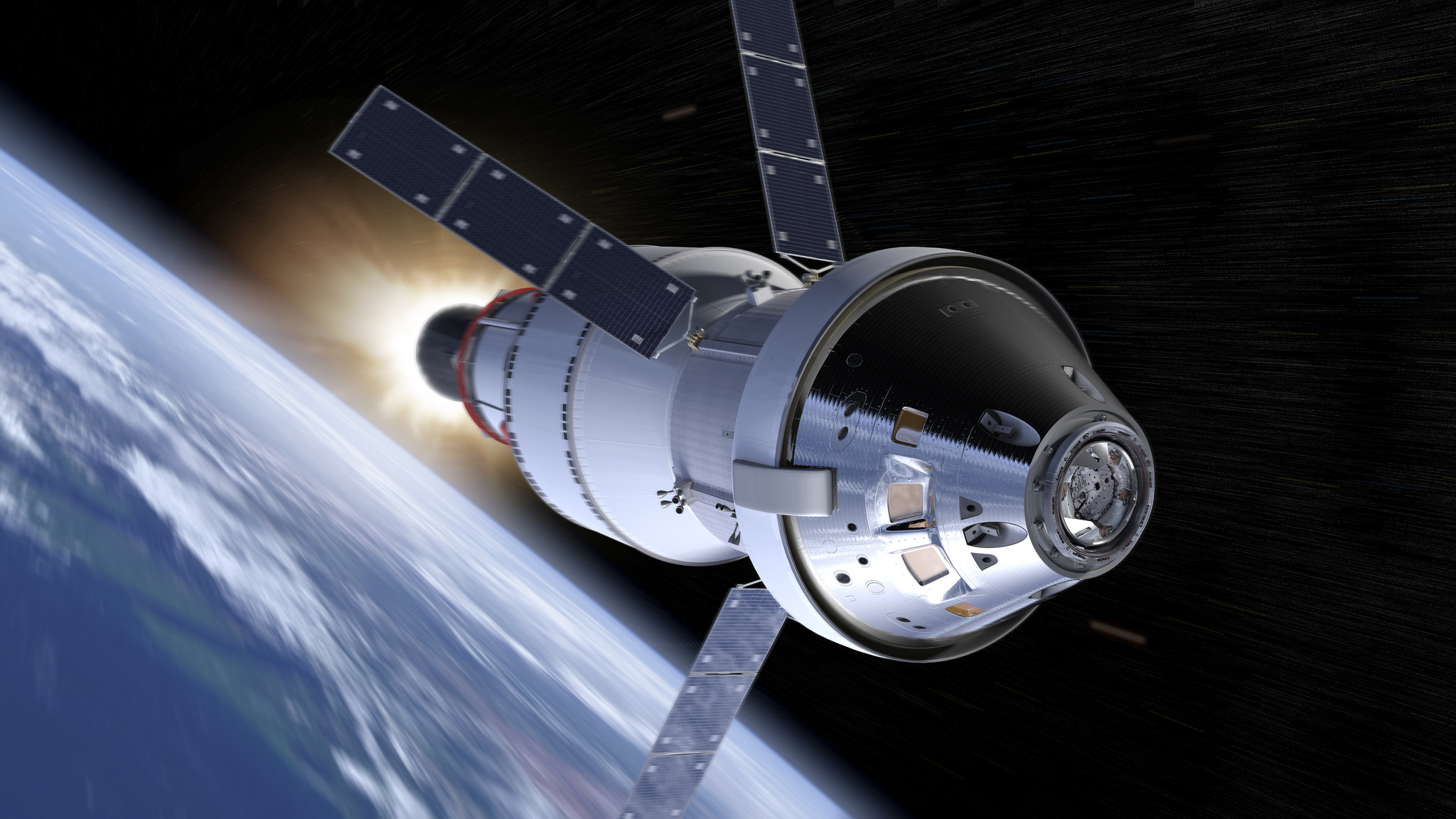New Moons and Rings Found at Uranus

Astronomers have discovered new rings and small moons aroundUranus and found surprising changes in satellite orbits around the giantplanet.
NASA's Hubble Space Telescope photographed a pair ofpreviously unknown rings. The largest is twice the diameter of the planet'spreviously known rings. The new rings are so far from the planet that they arebeing called Uranus's "second ring system."
Hubble also spotted two small satellites. One shares its orbit with one of the newly discovered rings. Most surprisingly, the orbits of Uranus's family of inner moons have changed significantly in the last decade, the new data reveal.
Collectively, the discoveries mean Uranus has a densely packed, rapidly changing, and possibly unstable dynamical system of orbiting bodies.
"The new discoveries dramatically demonstrate that Uranus has a youthful and dynamic system of rings and moons," says MarkShowalter of the SETI Institute. "Until now nobody had a clue the rings were there, we had no right to expect them."
Since dust in such an orbit is expected to be depleted by spiraling away, the rings must be continually replenished with fresh material. Showalter and collaborator Jack Lissauer of the NASA Ames Research Center proposes that the outermost ring is replenished by a 12-mile-wide companion satellite, named Mab, which they first saw in 2003 using Hubble. Meteoroid impacts continually blast dust off the surface of Mab, and the dust then spreads out into a ring around Uranus.
Other small moons are linked to rings, including Amalthea at Jupiter, Pan at Saturn, and Galatea at Neptune.
Breaking space news, the latest updates on rocket launches, skywatching events and more!
Mab's ring receives a fresh infusion of dust from eachimpact. In this way, nature "balances the books" by keeping the ringsupplied with new dust while older dust spirals away or bangs back into themoon, the thinking goes.
Showalter and Lissauer have measured numerous changes to theorbits of Uranus's inner moons since 1994.
"This appears to be a random or chaotic process, where thereis a continual exchange of energy and angular momentum between the moons,"Lissauer said. "The changes in the last ten years are small, but the thingabout chaos is that small changes build up exponentially with time. As aresult, this suggests that the entire system is orbitally unstable."
The moons may begin to collide in a few million years,Lissauer figures.
Perhaps the most unstable moon of all is tiny Cupid, whoseorbit brings it within 500 miles of the moon Belinda.
Showalter and Lissauer propose that their discovery of asecond ring, which orbits closer to the planet than the new outermost ring,provides further evidence for collisional evolution of the system. This ringorbits in the midst of the moons but has no visible body to re-supply it withdust.
"This ring may be the telltale sign of an unseen beltof bodies a few feet to a few miles in size," Showalter said. He proposesthat the collisional disruption of a moon in Uranus's past could have producedthe debris ring they now observe.
- Cool Uranus Facts
- New Images Reveal Clouds on Planet Uranus

Space.com is the premier source of space exploration, innovation and astronomy news, chronicling (and celebrating) humanity's ongoing expansion across the final frontier. Originally founded in 1999, Space.com is, and always has been, the passion of writers and editors who are space fans and also trained journalists. Our current news team consists of Editor-in-Chief Tariq Malik; Editor Hanneke Weitering, Senior Space Writer Mike Wall; Senior Writer Meghan Bartels; Senior Writer Chelsea Gohd, Senior Writer Tereza Pultarova and Staff Writer Alexander Cox, focusing on e-commerce. Senior Producer Steve Spaleta oversees our space videos, with Diana Whitcroft as our Social Media Editor.
